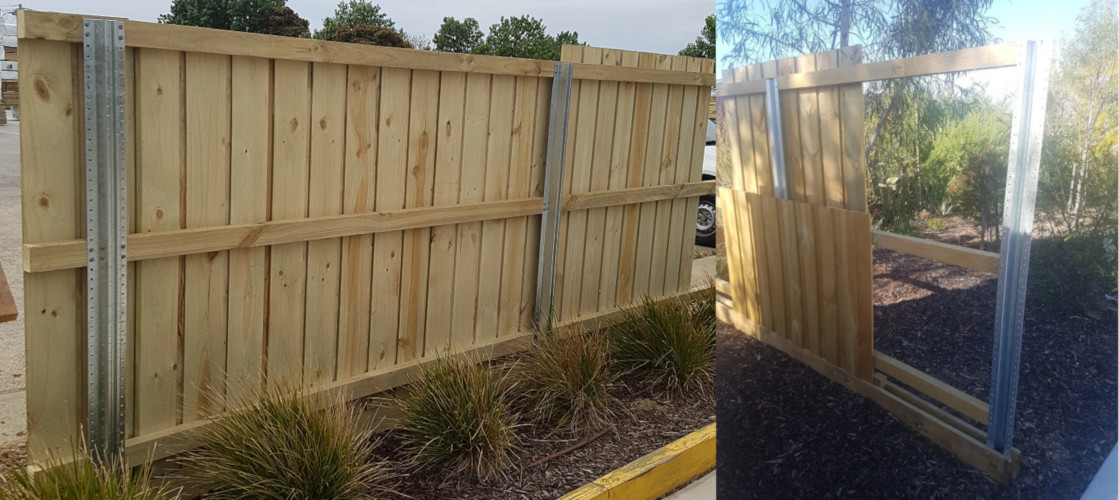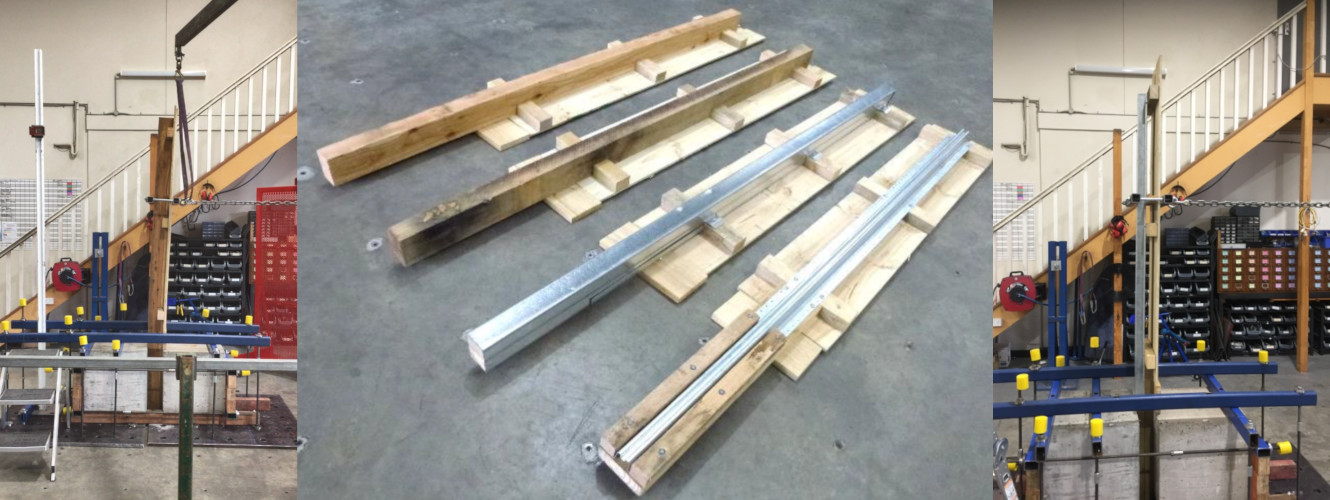Introduction
For many years timber posts have been used for paling fences around most states in Australia. Sadly, we have used up all the available old Red Gum and similar trees that had a life span up to 50 years. The more recent options like Cypress, younger or lower class Gum varieties have a shorter life span. Because of the variability of timber, a fence post that would typically last 10-15 years, may fail after 5. Increasing scarcity of these has also caused prices to rise sharply over the last few years and we expect that to continue.
The combination of these factors has led to people in the industry looking for alternatives that aren’t the old concrete posts.
One innovation is a roll formed galvabond post shaped around the same size as a timber fence post with check outs for rails pre-cut and the cut out forming flaps to attach the rails. We’ll refer to it as RF1 in the results table.
Lifetime Pine tried to think through all the issues facing fencers doing a variety of paling fence types and heights and came up with our design registered “W” Post. It will handle sloping ground, capping, any plinth variation and a double paled fence. The advantage of a steel post, especially hot dip galvanised (HDG), is that it will continue to perform at the same level, even after many years in ground.
 Some common questions when people are considering options for their paling fence are “How long will the posts last?” and “Which post is stronger?” To answer the second question effectively, we commissioned load testing on a range of fence posts through Melbourne Testing Services.
Some common questions when people are considering options for their paling fence are “How long will the posts last?” and “Which post is stronger?” To answer the second question effectively, we commissioned load testing on a range of fence posts through Melbourne Testing Services.
Method
We tested our HDG Steel “W” Post, the alternative Steel RF1 post, as well as standard Mixed Gum and Cypress fence posts. To make the tests realistic, we manufactured a mini fence, complete with rails, palings and plinth, but only 300mm wide.
These posts were then solidly anchored with load applied incrementally at two thirds of the height above ground level.
For each of these we tested load from both the paling side and the rail side. (In cases where a rail is checked in the post can be substantially stronger pushing toward the rail than away from it.)
 After each increment, the force was released and any residual deflection measured before the next level of force was applied.
After each increment, the force was released and any residual deflection measured before the next level of force was applied.
Results
All posts were tested to breaking point. In the case of timber, that was a snap while, for steel, it was where the residual deflection at the top of the post was greater than 15mm.
Both types of timber post performed well, withstanding pressure well in excess of any winds likely to be encountered around Melbourne (see table below). Of course, the problem with timber posts was never how strong they were when new. The issues of deterioration in post properties after 5 years and variability still remain.
The “W” Post also performed well withstanding loads of 116km/h one way and 120 km/h before showing signs of bending. So it’s pleasing to report that all three varieties of post we sell will stand up to any wind gust we can expect around Melbourne.
| Post Type | Break Point Toward Rail | Break Point Away From Rail |
| Mixed Gum | 190km/h | 167km/h |
| Cypress | 153km/h | 125km/h |
| HDG Steel “W” Post | 116km/h | 120km/h |
| Steel RF1 | 80km/h | 80km/h |